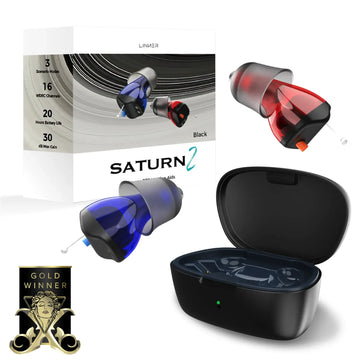Public spaces are rarely quiet. They hum, buzz, echo, chatter. For someone who wears hearing aids, these environments can either be manageable or overwhelming, depending on how prepared you are. Many people want to sit down with a book, a magazine, or even an audiobook while waiting in an airport lounge, sitting in a café, or passing time in a library corner. To read with hearing aids effectively in such environments requires strategies that balance comfort, focus, and awareness. This text dives into those strategies, using simple language, but weaving in different styles of explanation to make the reading less predictable and more engaging.

Understanding the Public Space Challenge
A public place is unpredictable. One moment you hear background music, then a sudden laugh from the next table, or the scraping of chairs. Hearing aids amplify sound, but they do not automatically decide which noise is important and which is irrelevant. This can make it harder to concentrate on reading. According to the World Health Organization, more than 430 million people worldwide experience disabling hearing loss, and a significant portion uses hearing aids in daily life. That’s a big group of readers who face the same issue: how to stay focused and still hear better in public places.
Choosing the Right Spot Matters
Reading in public is easier if you take control of where you sit. If possible, place yourself with your back against a wall. Why? Walls block background noise from one direction. Sitting near windows might be pleasant, but open spaces often invite unpredictable sounds. A small café corner can be quieter than the central tables. Libraries are generally calmer, yet even there, footsteps and whispers might distract.
- A seat away from speakers or kitchen areas in restaurants is better.
- Corners shield you from multiple noise sources.
- A simple act of moving three meters away from a noise cluster can reduce auditory stress significantly.
Sometimes it's not about technology but about location choice. But having a free reading app on your smartphone is also important. If you want to hear a recommendation, try FictionMe. There are separate selections, such as contractual marriage novel, stories with the mafia or even fantastic creatures. Lots of font settings, a huge selection of novels, user reviews, etc.
Fine-Tuning Hearing Aids Before Reading
Modern hearing aids allow different modes. Some include “speech focus” or “background noise reduction.” Before opening your book or e-reader, take a few seconds to adjust. A quieter setting can reduce the constant hum, leaving you more energy for reading. If you read with hearing aids regularly in public, ask your audiologist to create a custom “reading in public” program. Many devices today can save multiple profiles, and switching between them is as easy as tapping an app.
Think of it this way: just as you dim a lamp before relaxing, you can dim unwanted sound before immersing yourself in text.
Audiobooks as a Bridge
Not everyone can fully concentrate on printed text when the environment is noisy. A growing practice is to listen to audiobooks with hearing aids. Audiobooks allow your eyes to rest while your ears do the work. But here’s the trick: not all public spaces are audiobook-friendly. A subway car, for example, has both low-frequency rumble and sudden announcements. To counter this, pair hearing aids with Bluetooth streaming, if your device allows it. This feature sends the audiobook directly to your hearing aids, bypassing most surrounding distractions.
Audiobooks also help in places where focusing on text is nearly impossible. Instead of struggling, you shift the activity—still reading, but through sound.
Combining Reading and Awareness
Reading in public means you still need awareness of your environment. Even though you're engrossed in a new Android novel, you still have to be aware of what's going on in your environment. You can't completely shut off surroundings. Safety is part of the equation. For instance, while waiting in a train station, it's important to still hear announcements. Muting everything may feel relaxing, but you risk missing crucial information.
A good compromise is lowering amplification of background chatter while keeping mid-range sounds active. Many hearing aids support directional microphones. Point them forward while reading, so nearby speech remains clear, while the clatter behind you fades. In this way, you hear better in public places without losing track of what’s happening around you.
Managing Distractions Creatively
Some distractions are unavoidable. A child drops a toy, someone laughs loudly, or a barista bangs cups. Instead of getting frustrated, try small coping strategies:
- Use noise-cancelling headphones over your hearing aids when listening to audiobooks.
- Keep your reading sessions short—15 to 20 minutes—and then take a break.
- Carry reading material that does not demand maximum concentration, like light essays or short stories, if you know the place will be noisy.
This flexibility ensures you don’t associate public reading with constant stress.
Psychological Comfort Plays a Role
It’s not just about sound. It’s about mindset. Public reading can make people self-conscious, especially if adjusting hearing aids draws attention. But remember: over 70% of hearing aid users report improved quality of life when using them daily (data from the Hearing Industries Association). Confidence grows with practice. The more you experiment with reading in various environments, the more natural it becomes.
Sometimes, pairing reading with a ritual helps. Order the same tea, sit in the same corner, adjust the device the same way. Rituals build comfort, and comfort builds focus.
Blending Old and New Habits
Traditionally, reading was thought of as a silent, isolated activity. But in modern life, silence is a luxury. Using hearing aids in public spaces means creating a hybrid routine: reading some pages, then listening to a few audiobook chapters, then scanning the environment. It may sound fragmented, yet it works. In fact, neuroscientists suggest alternating activities improves retention, as the brain refreshes between tasks.
So instead of resisting the interruptions, you fold them into the rhythm of your reading. That’s a best practice not often mentioned but highly effective.
Final Thoughts
To read with hearing aids in public spaces is not impossible—it is simply different. It requires strategy: choosing the right seat, fine-tuning your device, experimenting with audiobooks, managing distractions, and building personal rituals. These small practices make a significant difference. Remember that hearing aids are tools, not obstacles. With them, you can still enjoy the pleasure of turning a page or following a narrator’s voice, even in the middle of a noisy café.
In short: you adapt, you adjust, you continue. And most importantly—you keep reading.





![Linner Mercury Clarity OTC Hearing Aids [FSA & HSA Eligible] Linner](http://www.linnerlife.com/cdn/shop/files/Linner-Mercury-Clarity-OTC-Hearing-Aids-_FSA-_-HSA-Eligible_-Linner-110038953.webp?v=1725853434&width=360)

